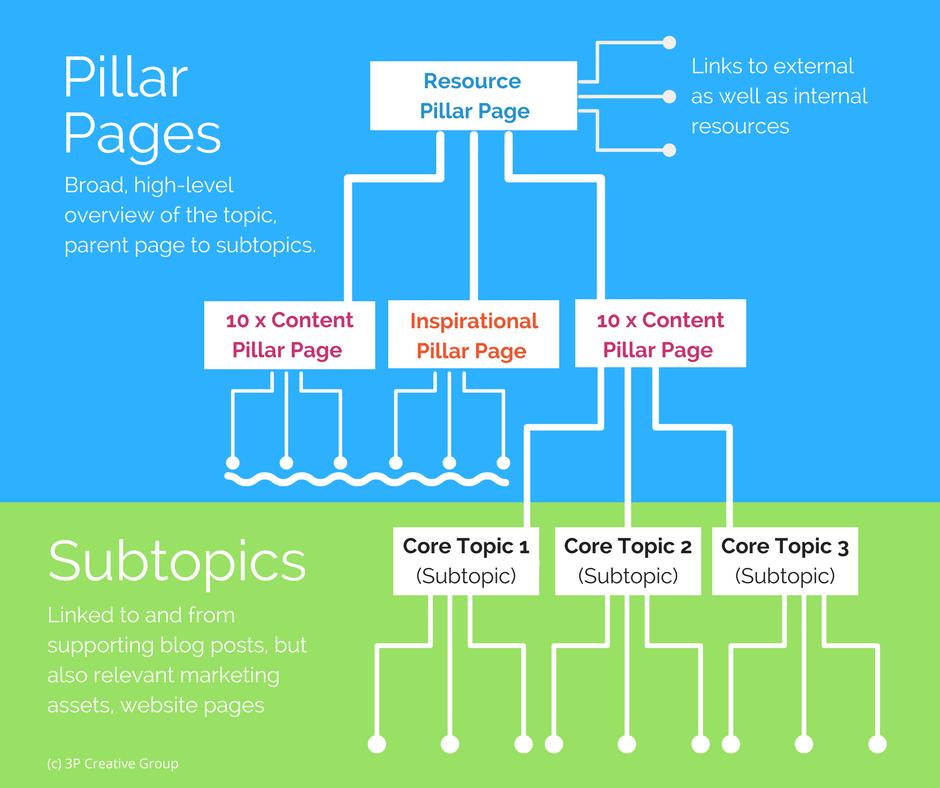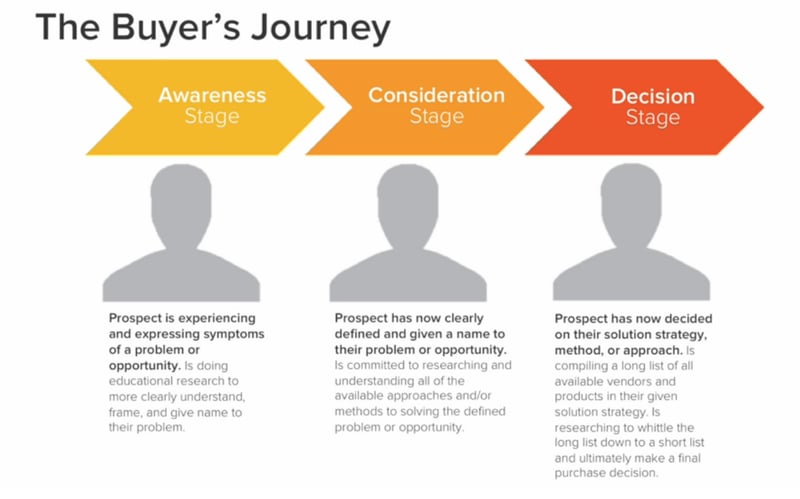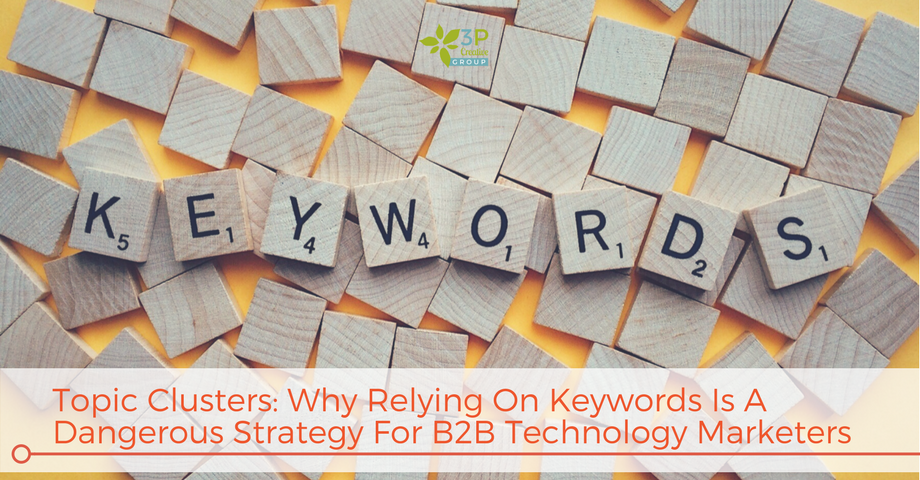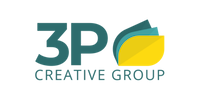SEO-, Customer-, Or ABM-Centric: Which Content Marketing Strategy Is More Successful For B2B Tech Companies?
For years, content marketing revolved around keyword optimization and getting the on-page search engine optimization (SEO) right. However, it has been a while since that has made much of a difference in the overall effectiveness of content marketing strategies. Now, after the COVID-19 pandemic started in March 2020, 51% of organizations asked in a recent Content Marketing Institute survey said that they are struggling even more to get the attention of their audience, yet feel that content marketing is of even greater importance in their business than it was before the pandemic.
Consequently, now more than ever, it is crucial to have a well-defined and documented content marketing strategy. In fact, the evidence is clear: 62% of those respondents who said their content marketing is highly successful have a documented marketing strategy (compared to 40% of organizations in general and only 11% of those that aren't very successful). While those numbers might not come as a surprise, the question for many looking to craft and document such said strategy is: Where do I start?
There are three major ways to approach defining a content marketing strategy: SEO-Centric, Customer-Centric, and ABM-Centric. Let's have a look at what each approach entails and then discuss which approach is right for you.
1. SEO-Centric Content Marketing Strategy
We all know that SEO is important. We first have to get people to our website or blog so they can read our helpful content and hopefully convert to a lead or a customer. So, defining a content marketing strategy with an SEO-centric approach makes sense, right?
In this approach, we first find specific keywords and phrases we would like to rank highly for. These should have enough monthly search volume to make the investment worthwhile, yet be specific enough to attract your target audience and align with your business goals. For example, "Digital Transformation" has a very high monthly search volume (18,000) but is impossible to rank for and is so broad as a term that it won't target a specific audience. But "Digital Transformation Strategy" is much more specific and still has 2,400 monthly searches.
Once you have found the right terms, it is time to create a plan of attack. Rather than simply brainstorming 100 blog post ideas based on sales conversations, customer questions, and your market observations, it is much more effective to define a topic cluster. This topic cluster is a logical hierarchical order of all the topics you would like to cover and how they all relate to each other. Most of the time, you will create an overarching pillar page that outlines all the content from a 30,000 feet point of view and links to supporting content that goes much deeper and provides much more detail.

I won't go into how to build a pillar page and its supporting topic clusters here in detail as we have discussed this in length here, but essentially think of it as if you are writing a book on the topic. It is structured, well-organized, and easy to navigate while providing deep insights, helpful advice, and industry expertise.
2. Customer-Centric Content Marketing Strategy
In contrast to that, a Customer-First Content Marketing Strategy focuses on the person you want to attract to your website in order to convert them into a lead for your sales team.
Instead of starting with a specific keyword or phrase, you look at your primary buyer personas and their buyer's journey. A buyer's journey is the decision process someone goes through when making or considering a purchase. The journey begins with experiencing or expressing symptoms of a problem or opportunity (Awareness Stage), then moves on to giving that problem or opportunity a name and considering different solution approaches (Consideration Stage), and concludes with deciding on the preferred solution strategy, method, or approach (Decision Stage).

All three stages have very different informational needs:
- In the Awareness Stage, a person will do a lot of research on their own. They still try to understand what exactly they are dealing with, how to define it, and how to frame it within a larger context. Depending on your industry, some things will work better than others, but in the B2B Technology sector, technology-focused leads tend to do a LOT of research, so whitepapers, analyst reports, research reports, in-depth how-to blog posts, and project plans perform really well. For executives, pocket guides that translate the technical information into layman's terms and make it applicable to high-level strategy are appreciated.
- In the Consideration Stage, the person is now committed to researching and fully understanding all available solution approaches. This means they are looking for comparison charts, feature lists, deeper technical data, expert opinions, webinars, and in-depth videos to collect all the information needed to make an informed decision. This is especially important in the B2B Technology space as these are often not only large investments but also have implications for existing infrastructure and future IT strategies.
- Finally, in the Decision Stage, the decision-maker will decide on an approach and compile a shortlist of possible vendors and their products to further investigate. To help your lead narrow down that list and finally make a decision, you can offer buyer's guides, pricing guides, ROI and savings calculators, product trials, live demos, consultations, and even Proof of Concept periods.
A Customer-First content marketing strategy will then map out pieces of content required per primary buyer persona and per buyer's journey stage. Whatever content you do not yet have, you should then create.
Need help creating your buyer personas? Check out our Buyer Persona Worksheet.
3. ABM-Centric Content Marketing Strategy
Account-Based Marketing is a relatively new concept that is especially successful in B2B Technology and SaaS sales processes if you are selling to an enterprise. Larger organizations will almost always have buying committees consisting of very different people, including C-Level management, Security and Operations Officers, heads of IT departments and sometimes business units, and so on. Some will be deeply invested, others might have objections and try to block the project.
All these people have very different levels of technical understanding and therefore their informational needs vary. They often even use very different language, slang, and buzzwords. The point of ABM-Centric Content Marketing is to craft content for each of those sets of prospects within a target company. The great benefit of this strategy is that, instead of marketing to one person and having to rely on that individual to "sell for you" to the buying committee, you can directly influence the decision-makers, influencers, blockers, and other stakeholders in an organized and targeted manner.
To get started, you will need to understand who exactly the people are that you are targeting, what their goals, fears, and objections are, and how they consume content. Then you can develop specific pieces directly for them. But beware — scaling this to 100 contacts per marketing person can be very challenging without a proper strategy! You must carefully define what your base content library looks like and then tweak each of the pieces rather than create everything from scratch. Otherwise, this can easily end in disaster!
Which Content Marketing Strategy Should You Choose?
As so often in life, the answer to which strategy you should choose depends on your circumstances. How much content do you currently have? How well defined is your inbound marketing and sales process? How mature is your content marketing team? How many buyer personas do you have and how different are they from each other? Do you struggle with long sales processes and get stuck in buying committees?
While I cannot give all possible scenarios in this blog post, here are some suggestions that illustrate the thought pattern:
- Choose an SEO-Centric approach if you have been doing content marketing for a long time, your buyer personas have quite similar needs, and you usually sell to single decision-makers. This allows you to structure and logically group the huge amount of content you already have.
- Choose a Customer-Centric approach if you are relatively new to content marketing (you have less than 50 blog posts), you are adding a strategic new buyer persona, or breaking into a new market. This way, you ensure you have the biggest return on your investment. Focus on one buyer persona at a time and cover the entire funnel first before expanding the breadth of your content offering.
- Choose an ABM-Centric approach if your company is using Account-Based Marketing. Of course, this can include elements of the strategies mentioned above, but you have to plan for scale by personalization and customization of foundational content pieces.
Tips
- Regardless of which content marketing strategy you decide on, it is helpful to perform a thorough audit of your existing content to determine what content you already have, where the gaps are, and how it either aligns to the buyer's journey stages or can be utilized to support a specific pillar page/topic cluster.
- If you plan strategically, you can reuse the content in creative and smart ways, hence saving you time, energy, and resources. For example, post a recorded-live webinar as an on-demand webinar. You can also re-use segments of that webinar within blog posts to further engage your readers.
Share this
You May Also Like
These Related Stories

What You Need To Know About The Buyer's Journey [Infographic]

Why B2B Technology Marketers Shouldn't Rely On Keywords, But Content Clusters

.png?width=250&height=125&name=TrustBuilderLogoWhiteTranspBackgr(250x125%20px).png)


No Comments Yet
Let us know what you think